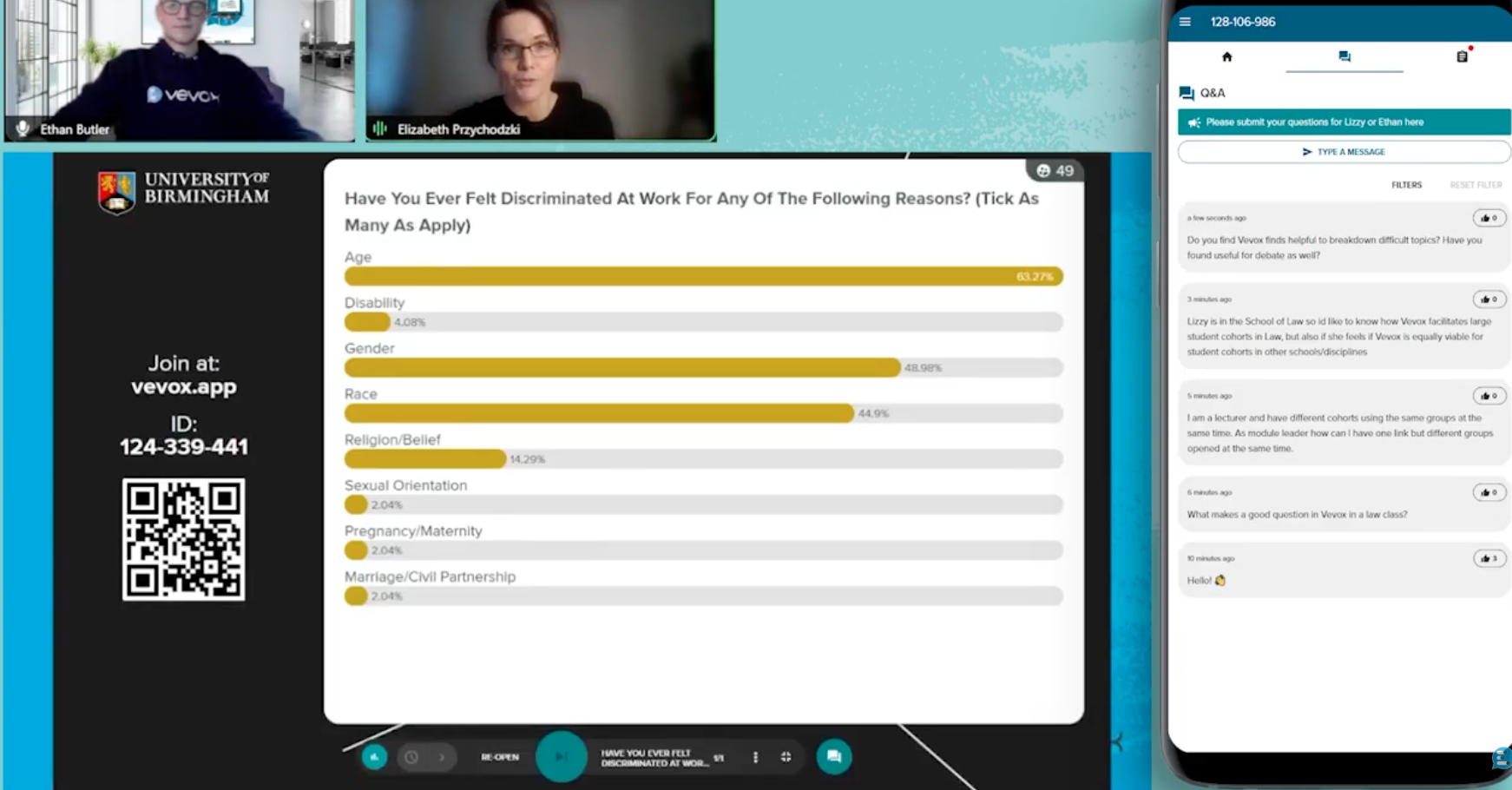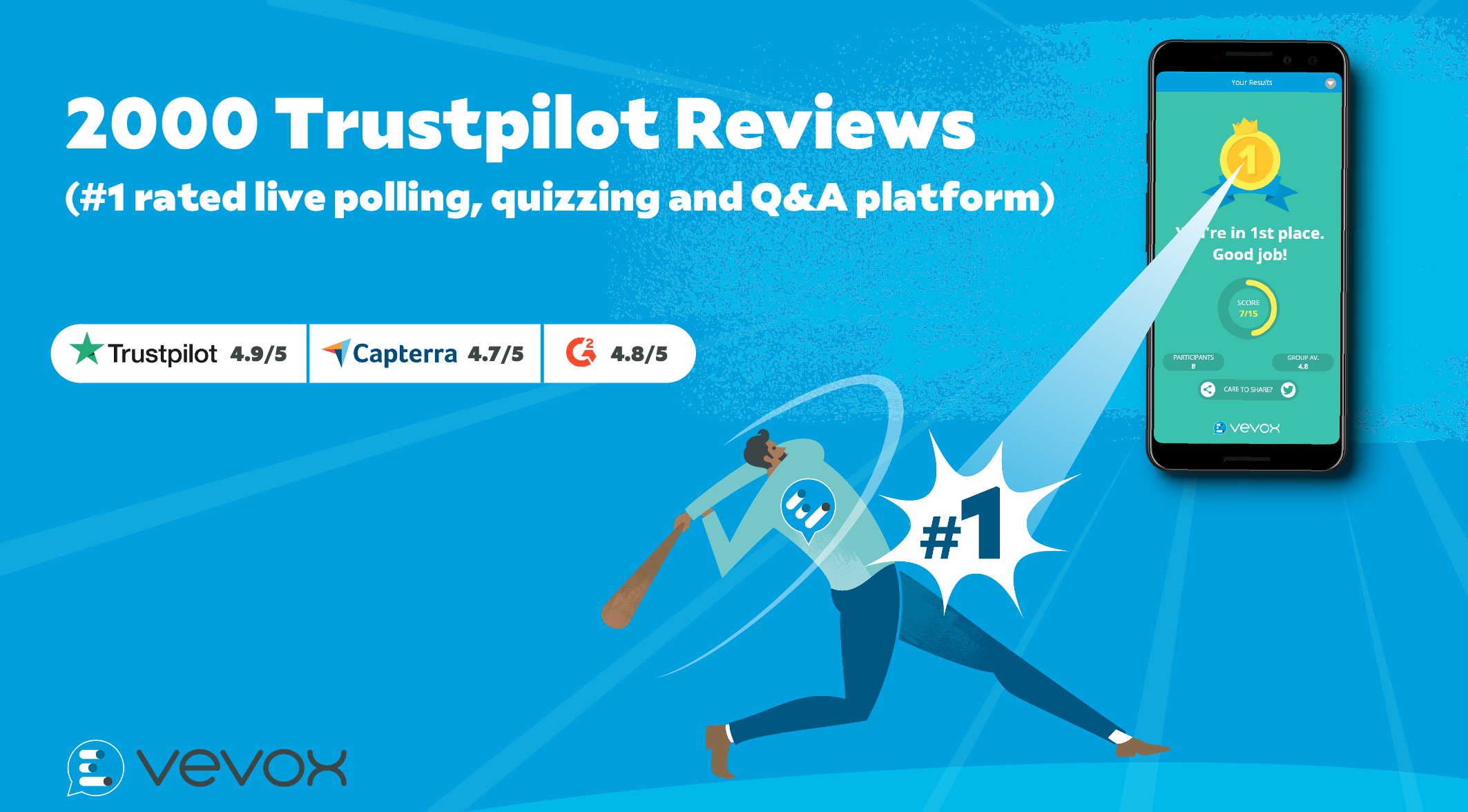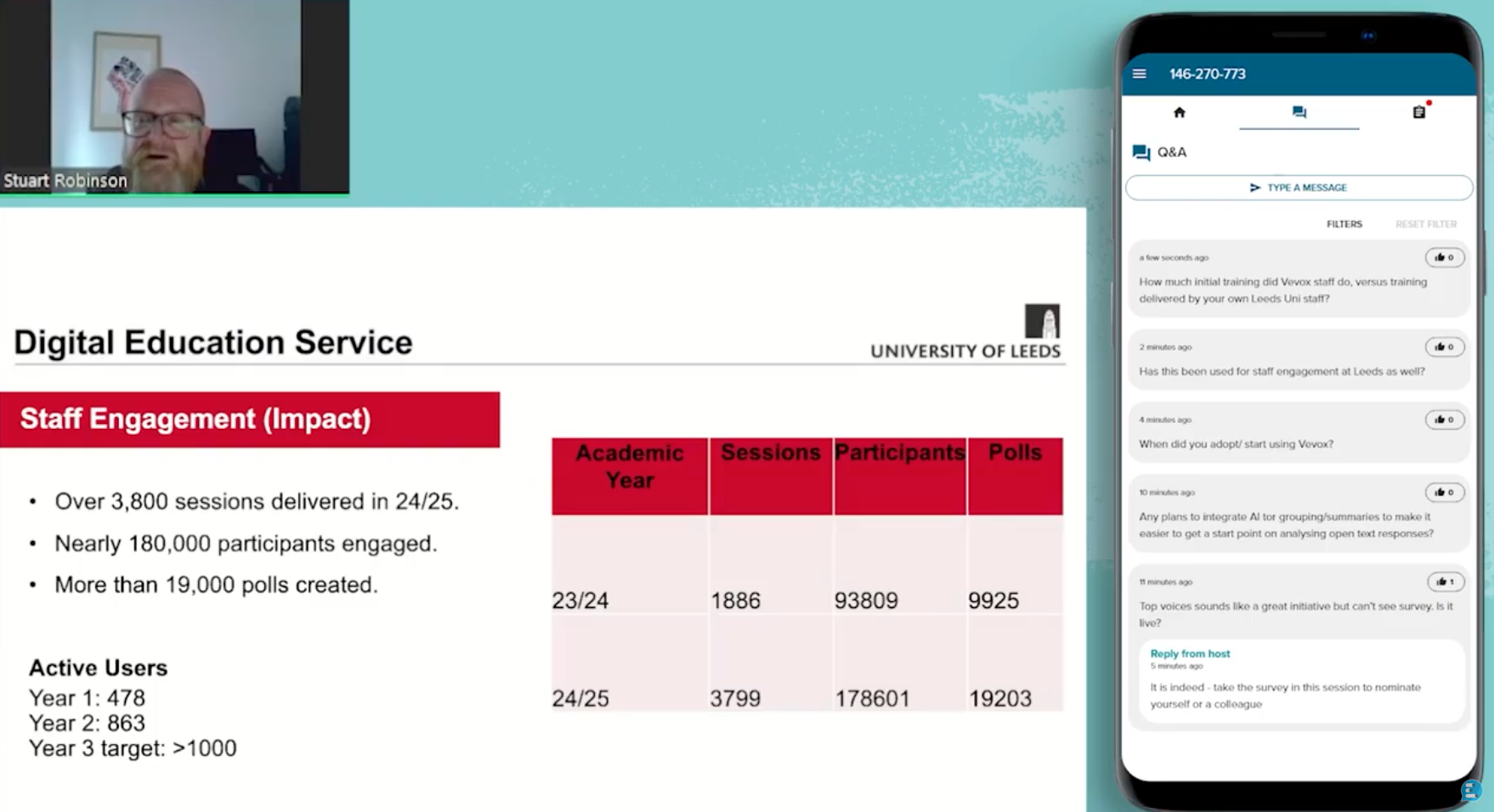Question and Answer (Q&A) sessions are the ideal place for employees to raise questions, concerns, and suggestions. They can be vital to hybrid, online and face-to-face meetings because they give each person a voice. Plus, not only do they ramp up audience engagement rates and humanize the event, but they also shed light on the subjects that matter most.
This article will get into actionable tips for helping you run a Q&A session. Here, we’ll elaborate on how and why these tips will boost your odds of success.
Tip 1: Plan and practice your Q&A moderation process
No two Q&A sessions are the same, and as of 2021, more than 40% of meetings happened online. To make your meeting — and as an extension, the Q&A session — stand out, you need to plan it.
Start with how you want to conduct your Q&A session. If you observe other successful Q&A sessions, you will notice that they can be conducted in two different ways:
- Identified Q&A
- Anonymous Q&A
Identified sessions are those in which participants share their names or ask questions in front of the group, whilst anonymous sessions allow participants to ask questions without sharing their name. For larger meetings, anonymous Q&A sessions are the better option. Many people are more comfortable with this arrangement because it removes the fear of judgment. They also encourage honest feedback and prevent social desirability bias.
Moderating sessions is also important. A great way of doing this is by appointing a moderator(s) to oversee the entire meeting. These moderators can observe, choose which questions/points should be highlighted and prevent certain messages from derailing the meeting.
Tip 2: Actively encourage employee participation
When it comes to workplace Q&A sessions, employee participation is essential. However, it can be tricky to encourage employees to see the value in this. Therefore, it is good practice to remind them that their opinion matters and discourage them from simply watching and not getting involved.
Disengaged employees and a lack of employee satisfaction can drastically harm a company, so finding ways to make employees feel valued is essential. Effective Q&A sessions are a great way of achieving this. To ensure high engagement rates, use incentives. It is likely that if there is a benefit of partaking, employees will do so. State how their feedback will be actioned or followed up with. Offering prizes for the most liked questions or ideas can help with encouraging interaction.
Also, eliminate the spotlight, especially if you’re holding anonymous meetings. Some people may have questions but dislike raising them if it equates to glares and stares.
Tip 3: Ensure the session is effectively coordinated
Efficient meeting planning is the first step towards success, and the same applies when it comes to Q&A sessions.
Prior planning ensures that everyone involved is prepared and can prevent surprises and therefore ensure that the session goes off without a hitch. Arguably one of the best ways of ensuring speakers are prepared is by giving them the questions in advance. It is possible to collect questions via digital Q&A or polls a couple of weeks before the actual meeting, giving the organizers time to decide which order the questions should be asked in to create a natural flow.
The structure of a session should also be considered and moderators should be involved in ensuring this is adhered to. A presentation or pitch is a good way of kicking things off with intermittent polls for audience engagement followed by Q&A’s and a round up speech as the meeting comes to a close.
Tip 4: Consider the times of the Q&A
Timing is everything, and questioning can have a significant impact – it’s important to ensure everyone is left feeling positive about the meeting event rather than feeling underwhelmed.
Arguably, one of the best times to hold a Q&A session is during the conclusion of the meeting. After all, the conclusion stage is an opportunity to leave a thought-provoking impact on audiences.
The best way to handle this is to structure the Q&A session. Pre-determine a time (or set a time limit) for how long a session should run, decide the number of questions you want to take, and how much time you want to spend addressing these questions.
For example, your meeting should last for 60 minutes. So, within that period, commit 15 minutes for a Q&A session. Then, take five questions and allocate three minutes to address each. For much larger meetings like townhalls, consider answering a lot of the other employee questions via departmental meetings or via employee newsletters so colleagues have the answers to their questions.
Conclusion
Conducting post-event surveys is a way to measure the success of a Q&A session. Ask employees how they felt during the meeting, and make the survey questions anonymous to gather further honest insights into how people found the event. Don't forget to make your online surveys easy to access and to test them before they are sent out.
You can also keep tabs on corporate social media activity, channels and departmental leaders for further feedback. Kudos to you if your doing these four tips and running an effective Q&A session. Why not tag us on social media @VevoxApp to let us know your top Q&A tip.
Why not download our guide on how to run Q&A the Vevox way...
Author
Rebecca DiCioccio is the Marketing Manager at Paperform. Outside of work, Rebecca can be found exploring the outdoors or with a book in hand. Rebecca’s background in copywriting and keen interest in SEO and digital marketing mean she understands the importance of staying up to date with the latest trends in a dynamic and ever changing industry.




